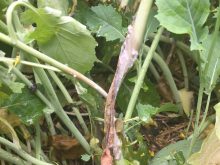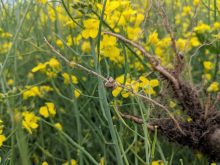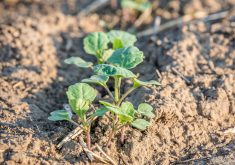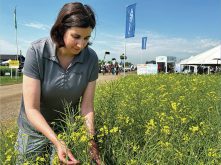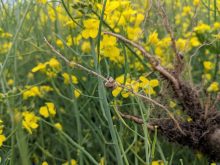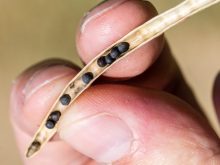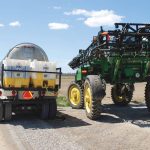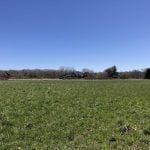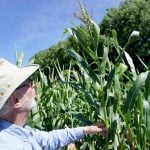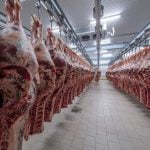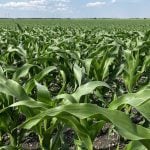A wise man once said the times change and if you don’t change with them you get left behind.
While he likely wasn’t talking about canola, the industry’s ability to change with the times has been a key factor in its continued success in this country. It’s been estimated Canada’s canola value chain generates around $30 billion in economic activity.
The industry’s willingness to change with the times is evidenced by agricultural companies investing millions of dollars a year to develop new varieties of canola. Those efforts have become even more critical in recent years due to ever-changing climate conditions and disease pressures.
Read Also
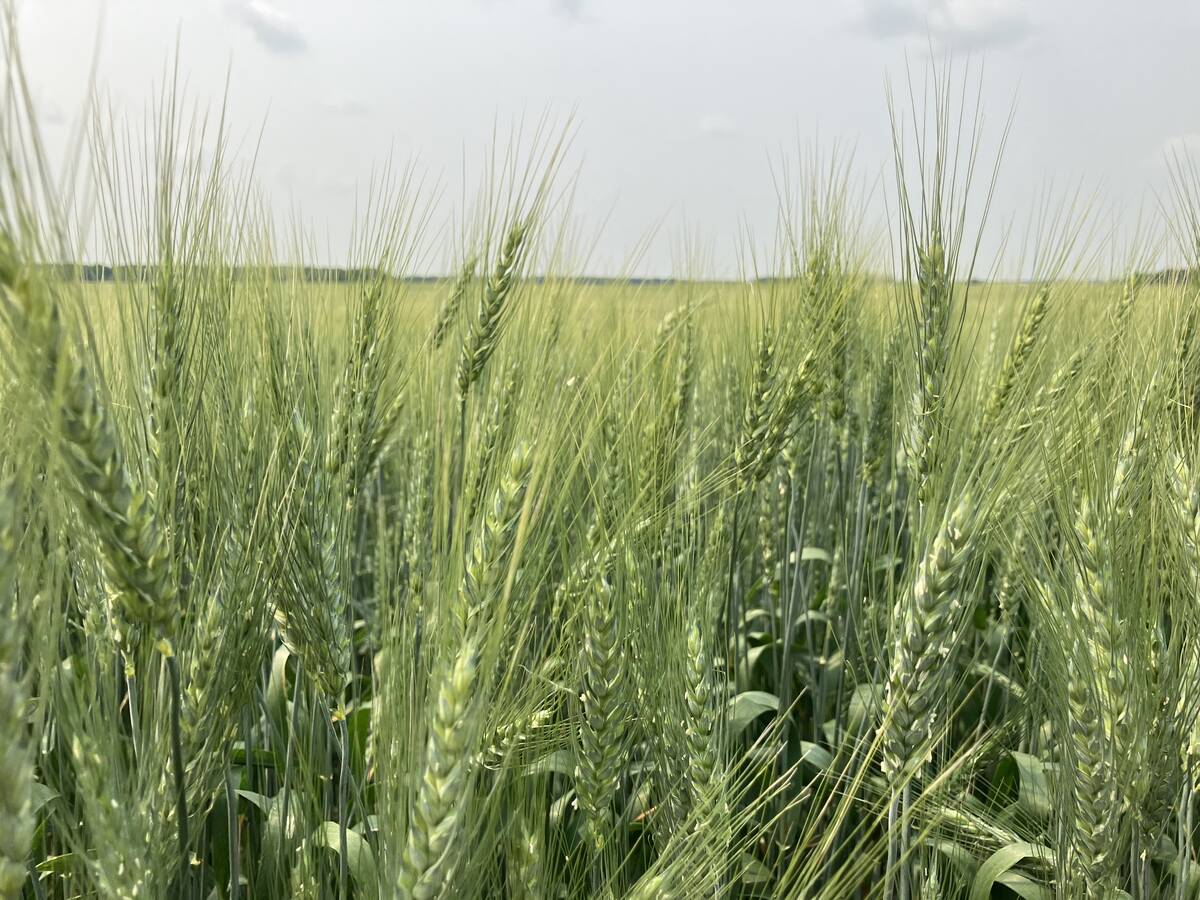
Swather-sprayer retrofit a clever solution to winter wheat’s tight planting window
A system to spray pre-seed herbicide at the same time as swathing isn’t just a clever labour-saver, but could help overcome one of the biggest obstacles keeping Prairie farmers out of winter wheat: the timing.
Grainews recently spoke with some of the country’s leading seed companies to find out what new hybrids they are developing, what their process is for developing those products, and how climate change is affecting those efforts.
Extreme weather impact
Canterra Seeds takes a slightly different approach to developing new varieties than do most seed companies. Canola product manager Courtney Welch says the Winnipeg-based company doesn’t have its own breeding program and instead works with several genetics partners who license their products to Canterra.
This strategy provides several advantages over traditional breeding programs, she says.
“Working with various different breeding partners we can have a wide range of maturities, as an example,” she says. “Another thing is that it allows us to have various herbicide tolerance types. We’re not limited to just LibertyLink or just TruFlex. We always have a wide variety of traits in our lineup.”
More extreme weather patterns, such as drought and excess rain, have definitely had an impact on Canterra and its genetics partners’ efforts to bring new varieties of canola online, Welch says. Thus they now make even more of an effort to look at multiple sets of data from multiple years, to zero in on which new varieties will or won’t fit.
“What we try to do, to make sure we have our bases covered in terms of that weather variability, is testing crops over a wide range of geographies,” she says.
“Not only do our breeding partners have their testing programs, but we are also testing potential candidates ourselves across the Prairies, in geographies that our testing partners may not have plots at, so we’re covering an even wider geography than they are able to do on their own. We want to make sure we have something that fits a wide range of areas. We’ve definitely expanded our footprint.”
One of the latest offerings to come through Canterra’s developmental pipeline, for example, is CS3300 TF, a TruFlex canola the company plans to release commercially as soon as next year. It’s the earliest maturing product the company has in its canola portfolio.
As for what comes next, Canterra and its partners are currently testing five new LibertyLink experimentals in both breeder and strip trials. They offer a wide variety of maturities along with a straight cut trait and excellent disease resistance. Welch says one or two of those new varieties could be commercialized within the next year or two.
“We can be a bit choosy when it comes to working with our breeding partners,” Welch explains.
“We want to make sure we’re advancing something that is unique to our portfolio in terms of different traits or different maturity levels and different disease resistance and include the best-yielding products in our portfolio.”
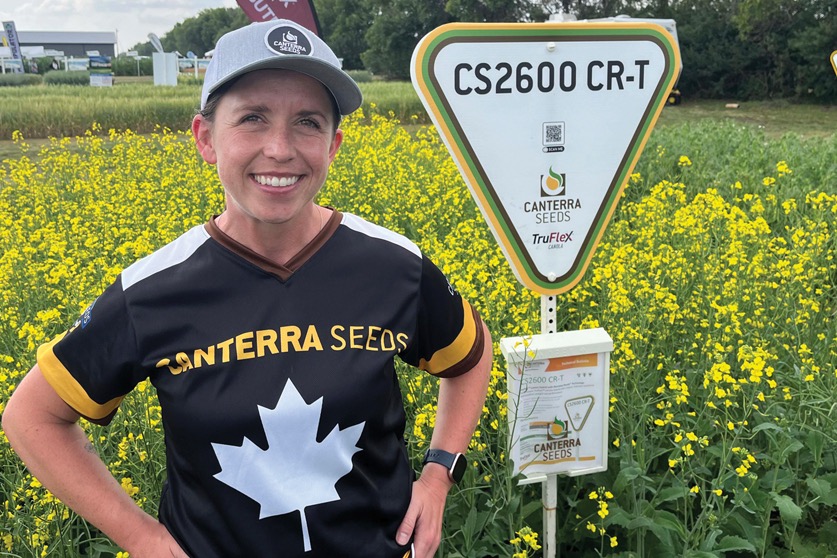
Disease resistance a priority
Nutrien Ag Solutions conducts its own in-house breeding program at its breeding facility in Saskatoon. The company’s R&D team conducts testing of any new products that come out of that facility at one of its 17 research locations and 105 trial sites across Western Canada.
Canola product line manager Jennifer Dale says disease resistance continues to be a priority for the company in its efforts to develop new varieties, particularly blackleg and clubroot. Pod-shatter resistance that allows canola crops to be straight cut is another consideration the company has been paying close attention to.
Dale says climate change has been at the forefront of the company’s conversations when it comes to its canola breeding efforts. Those conversations have focused on not only drought and some of the other stressors crops are facing, but also the changing growing season.
“We’ve had some great falls, but if you look at three years ago we had snow in the fall, so we’ve got to make sure those varieties can withstand any conditions that we throw at them,” she adds.
The most recent offering to come out of Nutrien’s developmental pipeline under the Proven Seed brand is PV 783 TCN, launched at Ag in Motion in July. Dale says the company is excited about that variety’s potential and the fact it will provide growers with more flexibility.
“This clubroot hybrid is a fit whether growers want a wider harvest window or to straight cut,” she adds.
Genetics flexibility
BrettYoung Seeds works closely with several genetics companies, including Forge Genetics and DL Seeds to drive its breeding efforts. Eric Gregory, BrettYoung’s director of marketing, says the advantage to this approach is that it allows the company to able to respond quickly to the needs of growers in Western Canada.
“The advantage is we’re not beholden to our own breeding program per se. We have some flexibility in terms of where we license genetics from. We like it that way because of the fact we can bring germplasm to the market that we feel fits the Western Canadian grower and the needs of our own portfolio. Having the flexibility to shop around a bit for products that fit … is important,” he says.
Gregory says climate change has made new product development and selection far more challenging for a company such as Winnipeg-based BrettYoung.
“The variability within the data sets that are being produced, in terms of maturity and yield performance and other aspects — it’s requiring breeders to create or generate even more data that is geographically dispersed across Western Canada than they would have in the past,” he explains.
“Traditionally, I think, canola has sort of been marketed as one product that fits all kinds of places, and that’s definitely changed over the last number of years. It’s certainly not to the level of where corn has become regionally targeted, but we know for a fact that certain hybrids are going to perform better in certain geographies than others do. We’re really trying to pull together a portfolio that meets the more regional needs of what farmers have.”
BrettYoung rolled out two new canola hybrids earlier this year in limited quantities and production is expected to ramp up for the 2025 growing season.
The company is continuing to build its LibertyLink canola portfolio. It’s been working with DL Seeds to develop eight new LL hybrids that are in co-op trials this year. The company expects to license one of those hybrids and have it available to growers for spring 2025. It will carry both the Pod DefendR and Clubroot DefendR traits and be mid-maturity and suitable for most growing regions.
Prairies a primary focus
Corteva Agriscience has had a presence in Western Canada for more than 30 years and conducts its own canola breeding efforts at a number of locations including Edmonton, Saskatoon and Carman.
Canola breeding lead Chad Koscielny says the region is a primary focus of the company’s breeding efforts.
“The western Canadian grower is one of the most progressive growers around the world,” he says. “Canada is a very favourable environment to do research and deliver value to the grower.”

Koscielny says climate change is making that research more challenging and is something on which the company has had to increasingly focus as it develops new products.
“One of the pieces of that … that we’ve implemented, and it’s really had a favourable impact, is genomic selection. What you’re able to do with that is use multi-year data to predict the performance of products that have never been tested in a specific environment,” he says.
“Accelerating genetic gain was the primary driver for us. It’s also allowed us to stabilize some of the genetic gain so you can understand what’s going on and you’re not as the mercy of those events such as 2021 or 2022 when some of those more severe droughts occurred.”
Among the latest canola hybrids to emerge from the Corteva developmental pipeline was P617 SL, the first canola hybrid in Western Canada that has a fungicide equivalency for sclerotinia. Koscielny says it’s an “exciting” new product especially in areas like Manitoba and Saskatchewan where growers have been dealing with excess moisture this season.
“This is one that’s really going to help growers when they get it on the farm and they’re hemming and hawing about whether they should spray or not. This is one where you’re able to go, ‘I’m not going to spray this one,’” he says, adding it also has some of the best-in-class clubroot genetics.
Corteva has several new canola products in its developmental pipeline that Koscielny expects will be released sometime in the next one to three years. While increased yields and additional blackleg and clubroot protection are high priorities, the company is also devoting considerable attention to verticillium tolerance.
“It’s an exciting time. We have all the traits and the pieces of the puzzle or ingredients for the recipe. It’s all about fitting them into the highest-yielding genetics and being able to deliver it to growers. We’re really focused on sustainability and the long-term value that we’re bringing to growers.”




